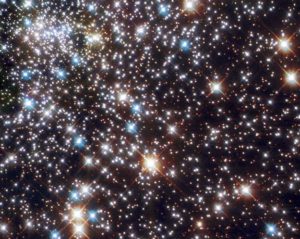 One of the primary evidences claimed for an old universe – and, by implication, an Earth billions of years old – is that light from the most distant stars can be observed on Earth today. It is argued that at the known speed or velocity of light it will have taken a great deal longer than, say, 6,000 years for it to have traveled from the distant stars to Earth.
One of the primary evidences claimed for an old universe – and, by implication, an Earth billions of years old – is that light from the most distant stars can be observed on Earth today. It is argued that at the known speed or velocity of light it will have taken a great deal longer than, say, 6,000 years for it to have traveled from the distant stars to Earth.
There is an inherent assumption in this seemingly rational argument that flies in the face of real science. There are a few but well established laws of physics agreed to by astrophysicists and all other scientists. One of these laws is the Second Law of Thermodynamics. It states that everything in the known universe is slowing down or going to a state of lower energy. Put another way, everything known about the Earth and the universe is running downhill. For example, we know our cars rust and wear out. They do not get better as they age. In contrast, evolution is a theory – NOT a Law – claiming that the velocity of light is and always has been the same. Is the velocity of light really constant, and are all the other related “physical constants” also constant? The answer is no.
The velocity of light was first determined in 1675 when measurements were made based upon the eclipses of Jupiter’s moons. Other, more refined methods have been employed since 1874. Between that date and the present, there is a statistically significant but small decrease in velocity. Interestingly, all the other related physical constants are also changing – either increasing or decreasing according to their relationship to the velocity of light.
Furthermore, velocity with respect to time is a hyperbolic function. In the case of light, this means that at Creation the velocity was extremely high and it then began to fall, very rapidly at first. Then, as time progressed, the rate at which the speed of light fell became less rapid. Today, it is almost a constant. The curve – showing the decreasing speed of light – is now almost horizontal. However, the small decrease is very real and still measurable.
From the biblical viewpoint, the light from the most distant stars probably reached the Garden of Eden a few days after creation. In other words, Adam’s night sky became progressively brighter until it reached the grandeur seen today on a cloudless night in the dry deserts of Egypt. The night sky still evokes a sense of awe and wonder of the God who created it … just as it did in ancient times.
© 2021 Creation Moments. All rights reserved.
